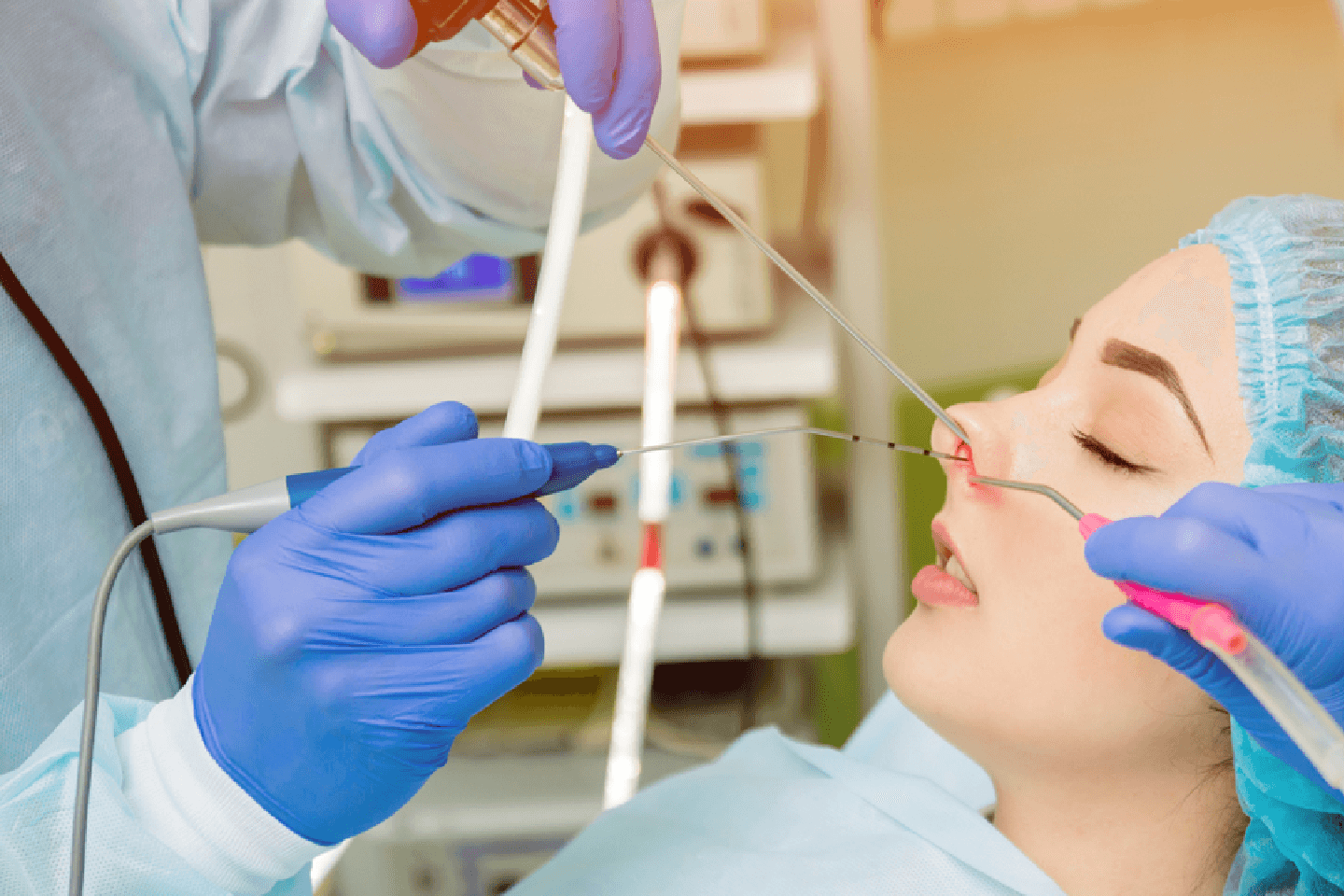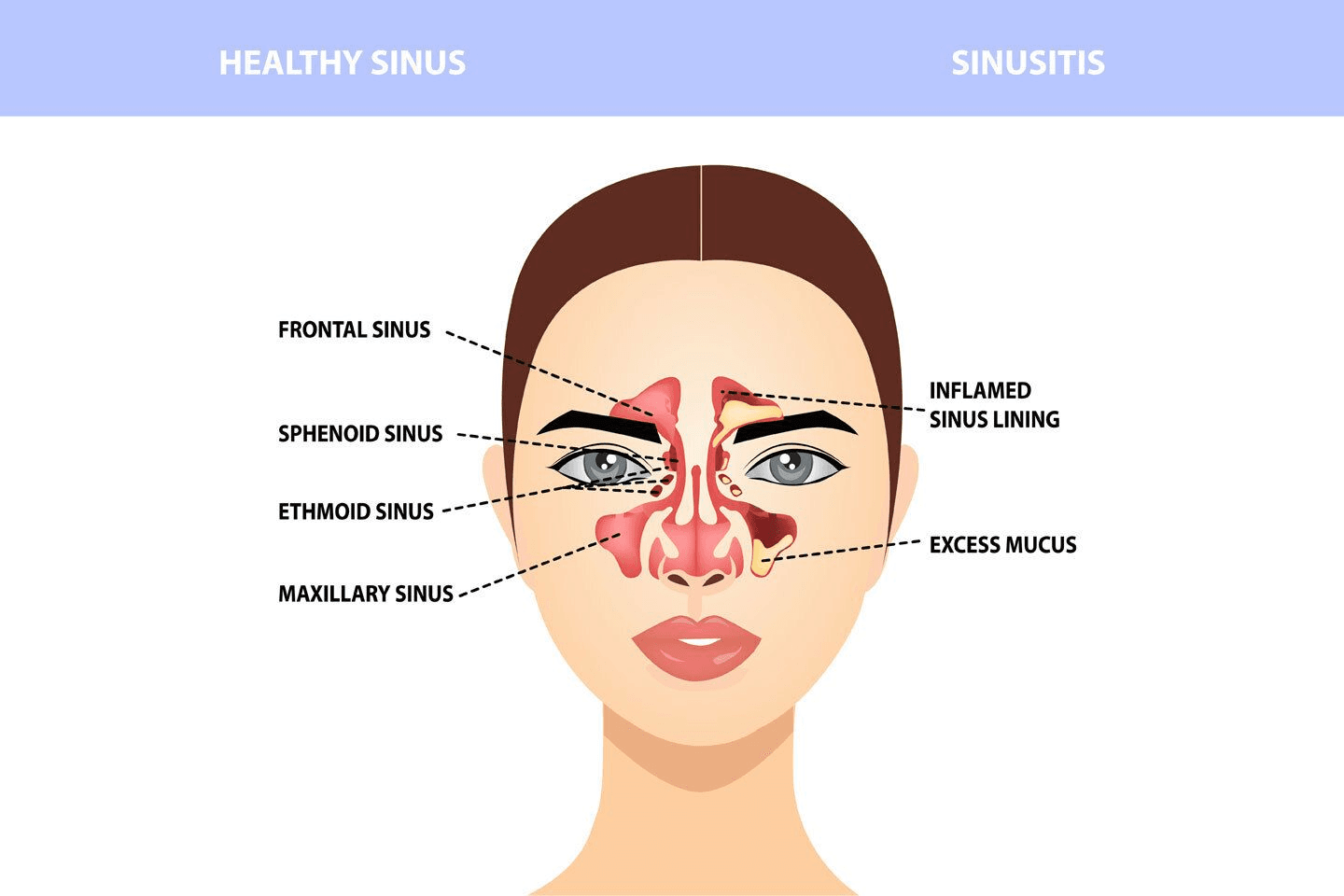
Sinus Surgery
What Is Sinus Surgery?
Sinus surgery is a medical procedure where ENT (ear, nose, and throat) doctors remove blockages in the sinuses. During the surgery the doctor may widen the natural openings between the nose and sinuses so mucus can drain properly and air can flow freely. The ENT surgeon may also remove infected tissue, soft growths called polyps, or small pieces of bone that are blocking sinuses.
Modern-day sinus surgeries are less invasive and require shorter recovery periods. Surgeons typically insert a tube-like structure through the nostrils. The patient may receive local or general anaesthesia, and the surgery can last between an hour to three hours, depending on the surgery type.
When Is Sinus Surgery Necessary?
Sinuses may get inflamed due to bacterial infections. Sinus infections or sinusitis can be treated with medicines. A general physician may prescribe drugs to treat colds and allergies that effectively get rid of sinus infections. However, surgery may be required when the prescribed medications fail to treat the infection.
The human face has four pairs of hollow spaces called sinuses:
- The large sinuses (maxillary sinuses) located behind your cheekbones. You can feel them when you touch the area below your eyes.
- Frontal sinuses: The frontal sinuses are divided into left and right frontal sinuses. The two sinuses are located at the centre of the forehead above each eye.
- The sphenoid sinuses, situated behind the eyes, lie deep within the head and are positioned close to important nerves.
- The small air pockets between your eyes and nose bridge (ethmoid sinuses) are actually a group of 6 to 12 tiny spaces between the eyes and nasal bridge that work together.
Following are the conditions that, when chronic, may require sinus operation
Sinus infection occurs when the sinuses become swollen and inflamed, making it hard for mucus to drain normally. Common warning signs include a stuffy nose that won't clear up, headaches (especially around the forehead and cheeks), thick mucus dripping down the eyes and face, a cough that's worse at night, a sore throat, and pain around plugged ears.
Polyps: Nasal polyps are soft, non-cancerous growths that look like small grapes hanging inside the nose and sinuses. While small polyps may not cause noticeable symptoms, larger ones can block breathing and make it hard to smell.
- Difficulty in breathing
- Runny nose
- Blocked nose
- Post-nasal drip
- Sleep apnea
- Snoring
- Headaches
- Reduced sense of smell
Types of Sinus Surgery
Functional Endoscopic Sinus Surgery (FESS): FESS is a minimally invasive surgical procedure used to treat chronic sinusitis and other sinus-related issues. The surgeon uses a thin tube with a tiny camera and light to see inside your nose and sinuses. Through this camera view, they can carefully remove infected tissue, small bone pieces, or polyps that are blocking your sinuses. The entire procedure is done through your nostrils – no cuts on your face.
Balloon Sinus Opening Procedure: This newer technique works like opening a blocked drain. Your doctor inserts a small, soft balloon into the blocked sinus opening and gently inflates it to widen the passage. Once the opening is larger, they flush out mucus and infection with salt water and then remove the balloon. This method is very gentle on your healthy tissue.
Once the surgeon places the balloon in the proper position, it is inflated gradually to open the sinus cavity. A saline solution is injected to flush out mucus or pus. This procedure minimises trauma to the surrounding delicate tissues in the sinus passage. Once the fluid is drained, patients may experience instant relief.
Recovery After Sinus Operation
The ENT speacialist may place soft, absorbable gauze in the patient’s nose to control bleeding – this either dissolves on its own or is removed during the follow-up visit.
What to expect at home: A bad cold for the first few days, with stuffiness, mild headaches, and some bloody drainage. This is completely normal.
Timeline for feeling better: Most people feel well enough to return to work within a week. You'll notice gradual improvement over 2-4 weeks as swelling goes down.
Important: Take all medications as prescribed, use saline rinses as directed, and don't miss your follow-up appointments – these visits help ensure your sinuses heal properly.
Most sinus surgeries are outpatient procedures. Doctors typically prescribe pain medications for nasal congestion or fatigue. Frequent ENT visits are also necessary to clean blood or excess mucus and ensure the sinuses heal correctly.
NOSZEL Absorbable Hemostatic Gelatin Sponge is a nasal packing solution from Meril. It is a non-toxic, non-allergenic, non-immunogenic, and non-pyrogenic sponge. NOSZEL can absorb the blood equivalent of approximately 45 times its weight and is naturally reabsorbed by the body. Surgeons can soak the sponge in any medicine, and its homeostatic properties remain unaffected.
NOSZEL can be used in ENT surgery, tympanoplasty, myringoplasty, stapedotomy, or to keep the fascia in the middle ear intact during middle-ear implant surgery. The gelatin sponge reduces intraoperative bleeding and the overall surgery time.
References
https://www.healthline.com/health/balloon-sinuplasty
https://health.ucdavis.edu/otolaryngology/Health%20Information/FESS-PatientsGuideSurgery.pdf
https://premiersinus.com/blog/your-guide-to-recovery-after-septum-or-sinus-surgery/
https://myhealth.alberta.ca/Health/aftercareinformation/pages/conditions.aspx?hwid=ug3524



